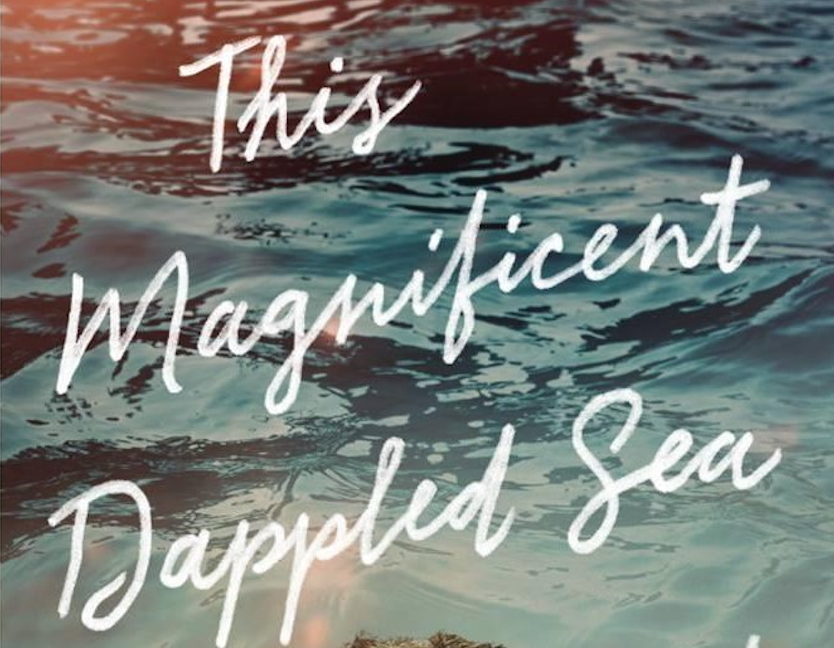A Wonderful Message for Today’s Divisive World
You are the author of several non-fiction books. What prompted you to write a novel?
I’ve always been a big reader, which is the main reason I eventually went to graduate school to study English literature. But fiction has always moved me on more of a visceral level than academic and non-fiction writing, and so I’ve always dreamed of creating a novel of my own. Now after over 10 years of trying, I’ve finally published one, which makes me incredibly happy!
How did your medical background help your research for this book?
There are scenes in the novel that take place in the hospital and two major characters are a nurse and a doctor, so I was definitely able to draw on my medical background when writing the novel. Also important to me was being able to convey some of the beauty surrounding the human body and its workings. When Dr. Crespi looks at the bone marrow under the microscope, he sees “a magnificent dappled sea” – blood cells of all different colors and shapes that make life possible – white cells that fight infection, red cells that carry oxygen, and platelets that prevent us from bleeding. It truly is a magnificent sight.
Also quite remarkable is the fact that you can replace a person’s bone marrow with someone else’s (once just an fanciful idea in a doctor’s mind) – and that you could do so in a way that the recipient’s immune system won’t reject that foreign marrow or that the donor marrow (which itself is made up of immunocompetent cells) doesn’t attack the recipient’s body.
Still another example is the remarkable phenomenon of homing, whereby cells in the body migrate to the organ of origin. In the case of Luca’s bone marrow transplant, those migrating cells belong to a stranger. And when the rabbi’s foreign cells are injected into Luca’s body, they must find their way to his marrow and make it their new home.
You yourself had a bone marrow transplant, isn’t that right?
Yes. Shortly after finishing my medical residency, I developed a rare blood disease and needed a bone marrow transplant. So, I am very familiar with what that entails, how Luca would have felt going through it.
Being a patient as well as a doctor also had a huge impact on my professional life. Since my journey to the land of the ill, I can better understand patients when they feel anxious and angry about what is happening to them, ashamed and isolated. Being sick is never easy and many times doctors, who don’t understand what patients go through and don’t always listen, can make the experience even worse.
The novel centers around a sick Italian boy Luca, and a rabbi from Brooklyn, who is suffering from a crisis of conscience. Are either of these characters autobiographical or are they completely imagined?
Actually, I read about just a such a real-life story in the New York Times 20 years ago, shortly after my own transplant, where a Brooklyn rabbi donates his marrow to save a young boy in Italy. I was so moved by the story – a stranger from a different country, from a completely different culture and background, willing to save this young boy – that I wanted to write about it, to fill in this basic framework with my own imagined characters and details.
I’m sure my own mixed background made the story particularly appealing to me – my mother was Italian and my father Jewish. And also, the fact that the story subverts the typical illness narrative -- Illness usually drives people apart, making patients feel alone and isolated – and yet in this instance, it brings people together. What a wonderful message for today’s divisive world!
You flash back to World War II Europe and the fate of Italian Jews. Why did you want to write about this aspect of history?
My father and his family lived in Hungary during the war and were fortunate to have survived, as almost the entire Hungarian Jewish population was killed. Italy was a very different story. There, 85% of the Jews survived, even though Mussolini’s Italy was an ally of Hitler and enacted racial laws like the Germans. How was that possible? The question fascinated me and led me to books on the subject, like Alexander Stille’s Benevolence and Betrayal and Susan Zucotti’s The Italians and the Holocaust. There I found stories of great treachery and great courage, in which the latter ultimately prevailed. When the German roundups took place in cities across Italy, the majority of Jews were able to escape, thanks in large measure to the courage of Italian authorities, clergy, and ordinary citizens. If only the same were true in the rest of Europe.
David Biro graduated from the University of Pennsylvania and Columbia Medical School. He earned his PhD in English Literature from Oxford University. He currently teaches at SUNY Downstate Medical Center and practices dermatology in Bay Ridge, Brooklyn. David is the author of two non-fiction books: One Hundred Days: My Unexpected Journey from Doctor to Patient and The Language of Pain: Finding Words, Compassion, and Relief. He has also published pieces in The New York Times, Slate, the Philadelphia Inquirer, and various medical journals. David lives in New York City with his wife, Daniella, and twin boys, Daniel and Luca. For more information, visit www.davidbiro.com
Stanislao Pugliese is Professor of History and the Queensboro Unico Distinguished Professor of Italian and Italian American Studies at Hofstra University.




































i-Italy
Facebook
Google+
This work may not be reproduced, in whole or in part, without prior written permission.
Questo lavoro non può essere riprodotto, in tutto o in parte, senza permesso scritto.